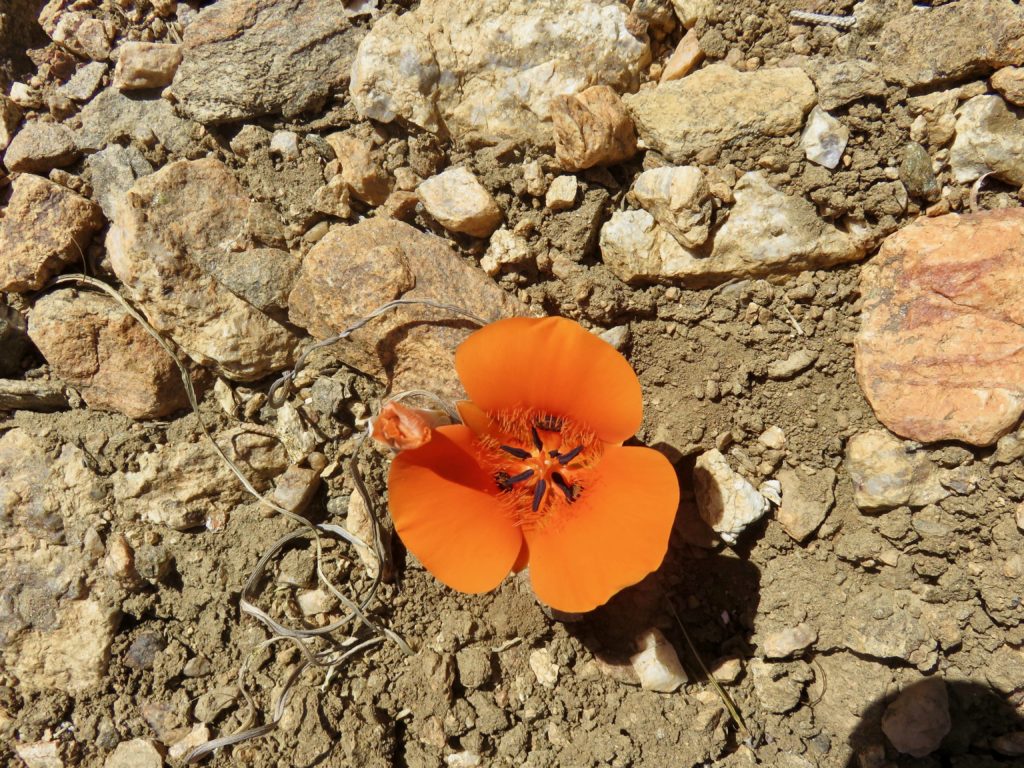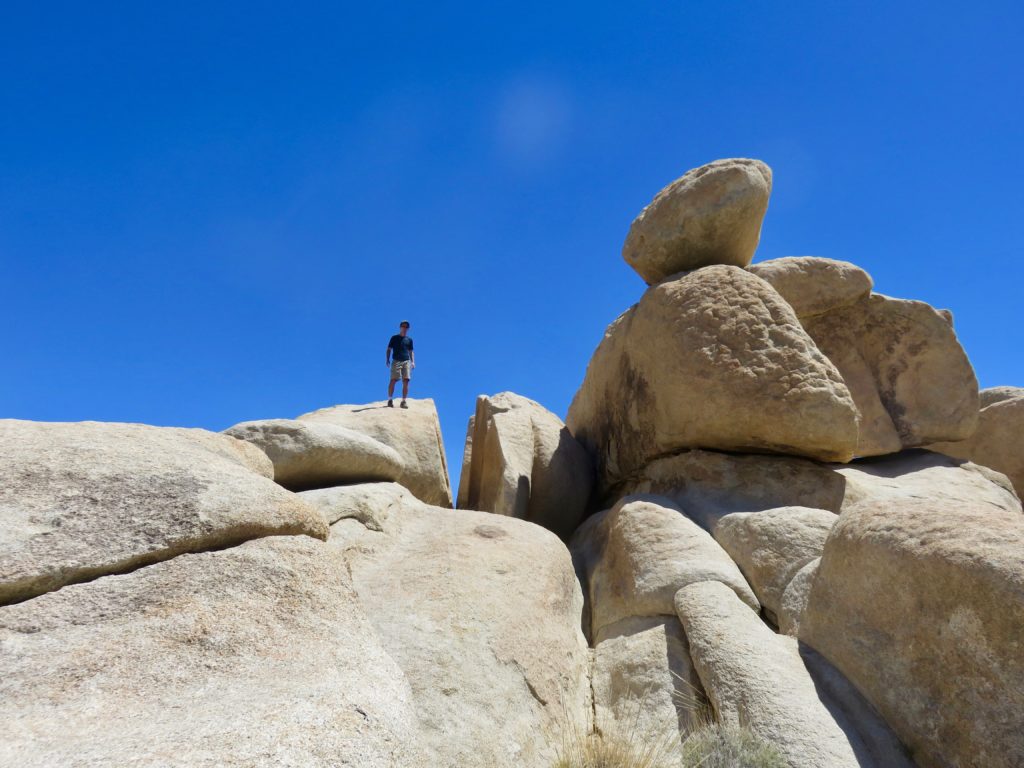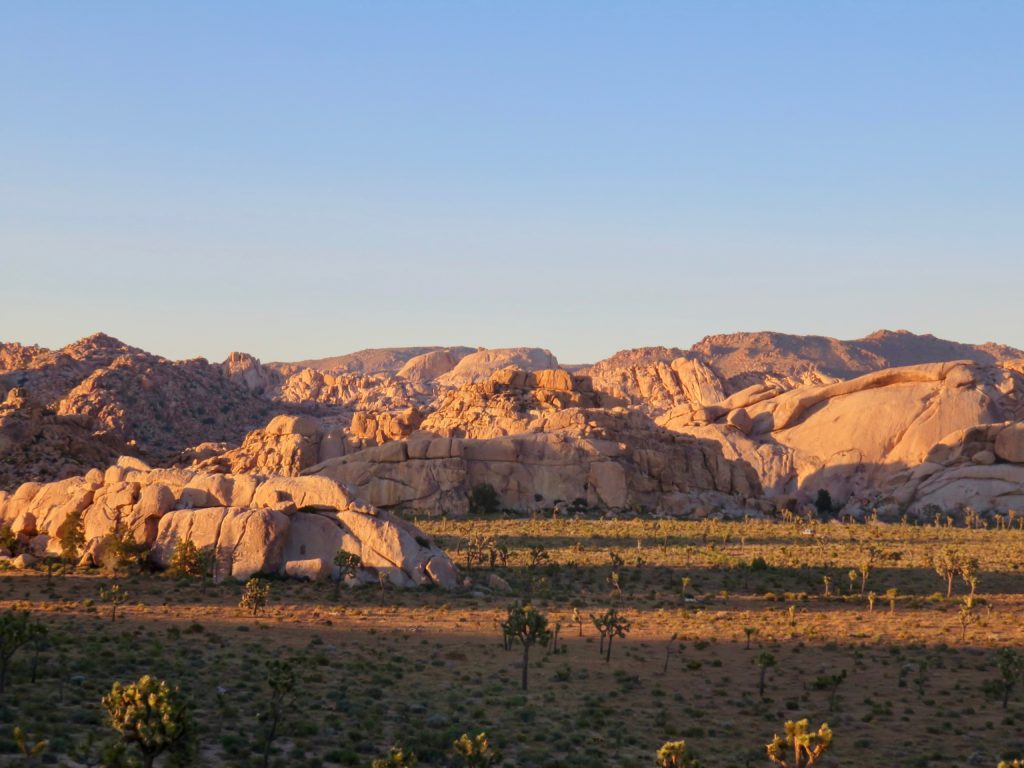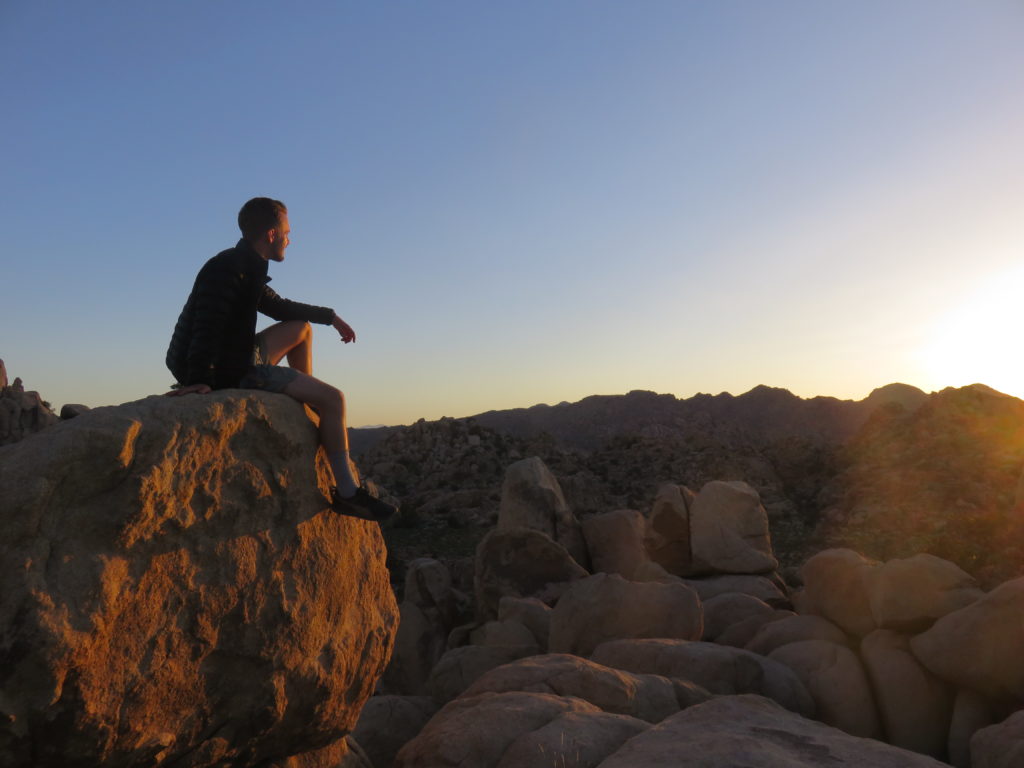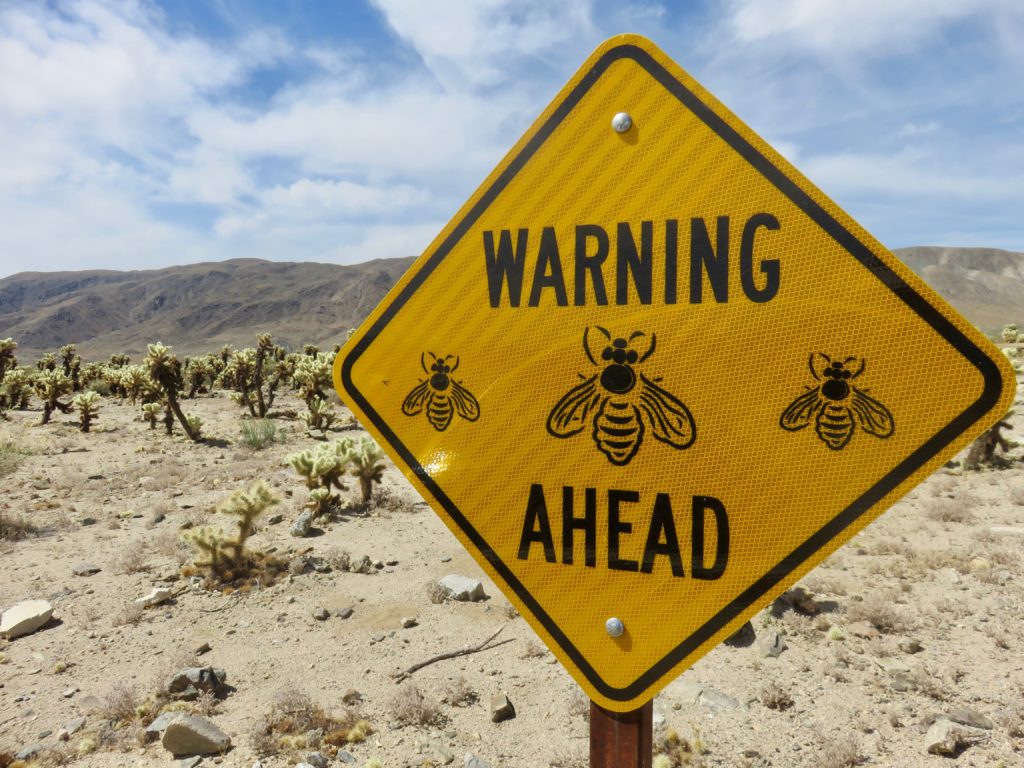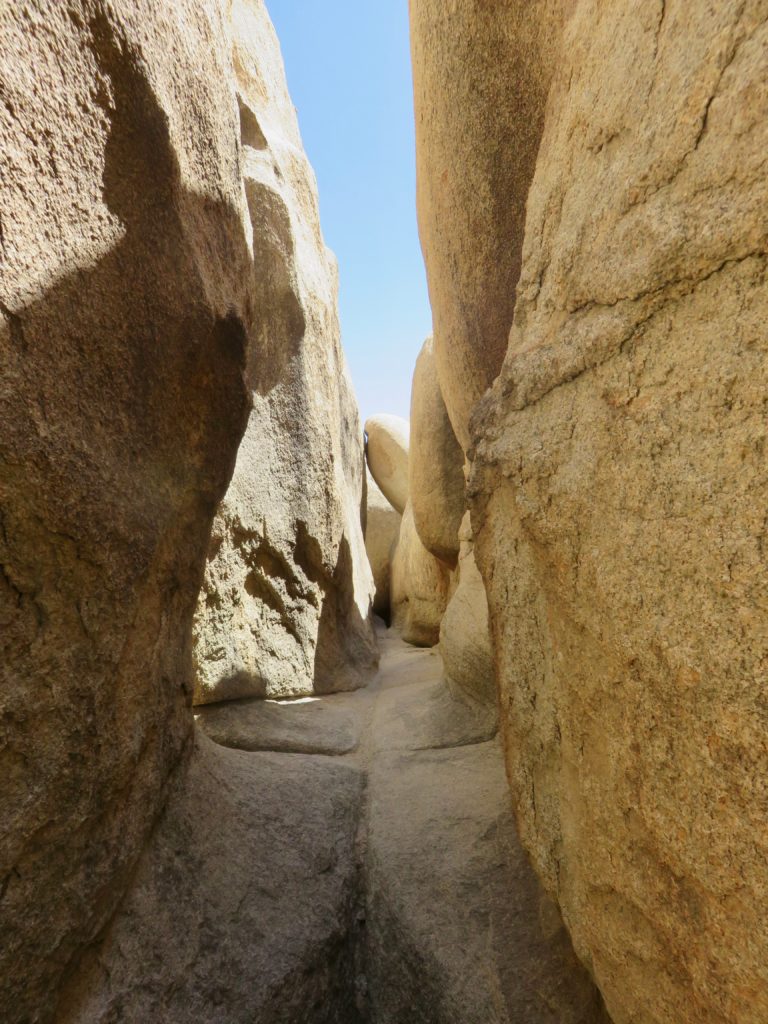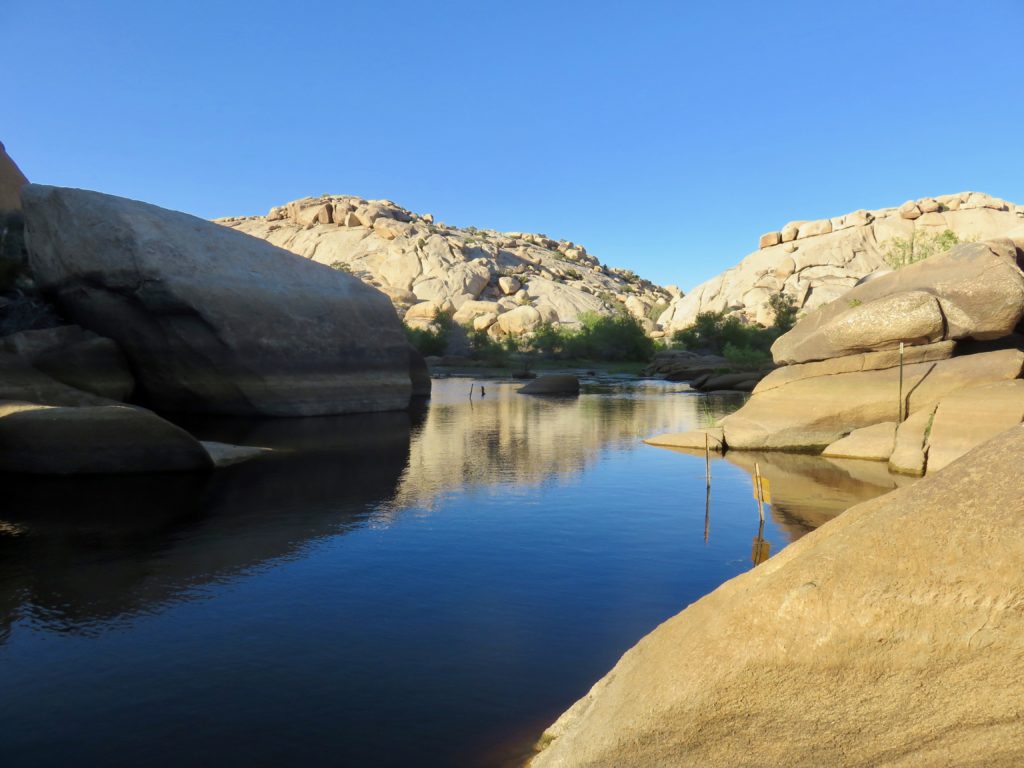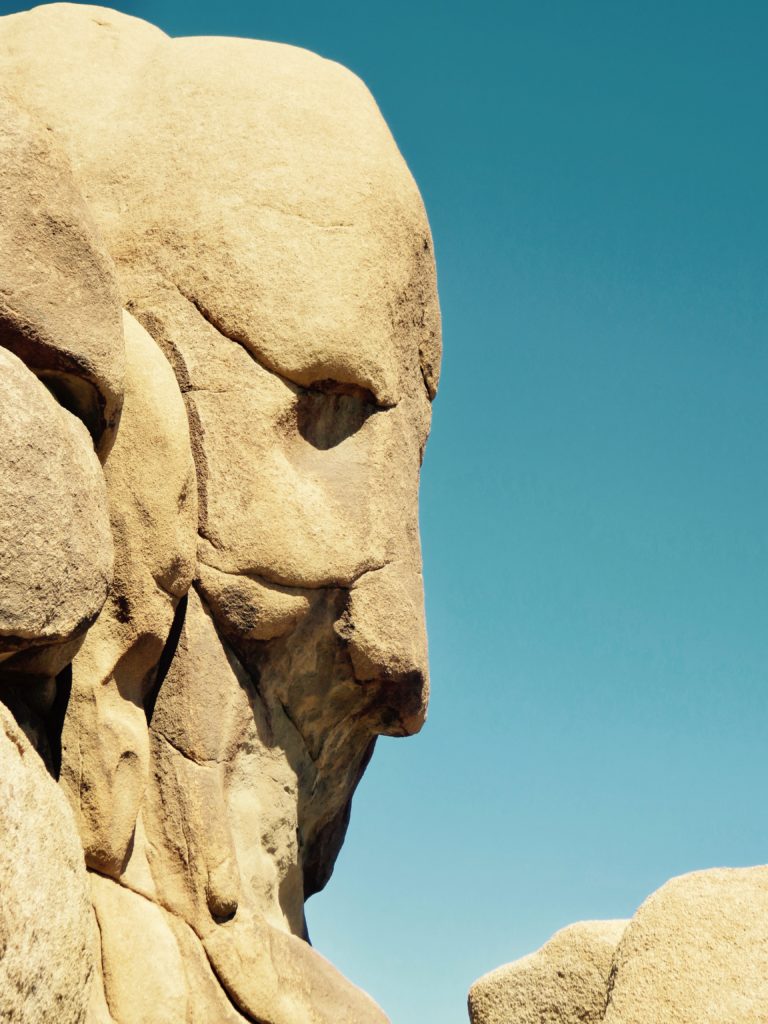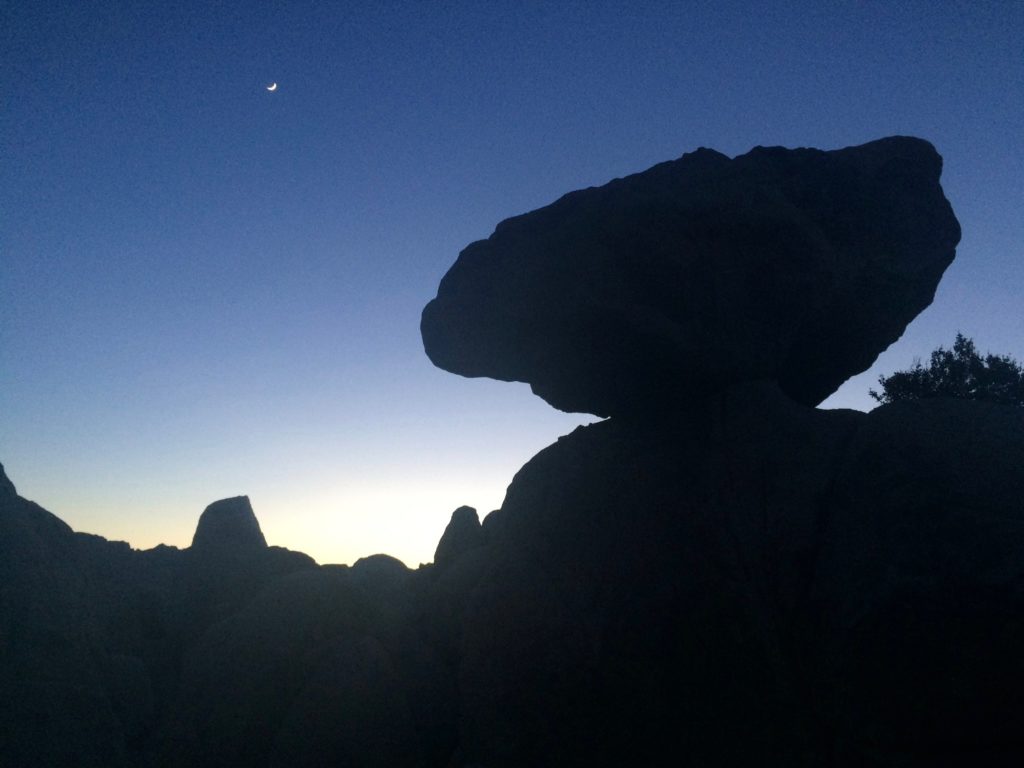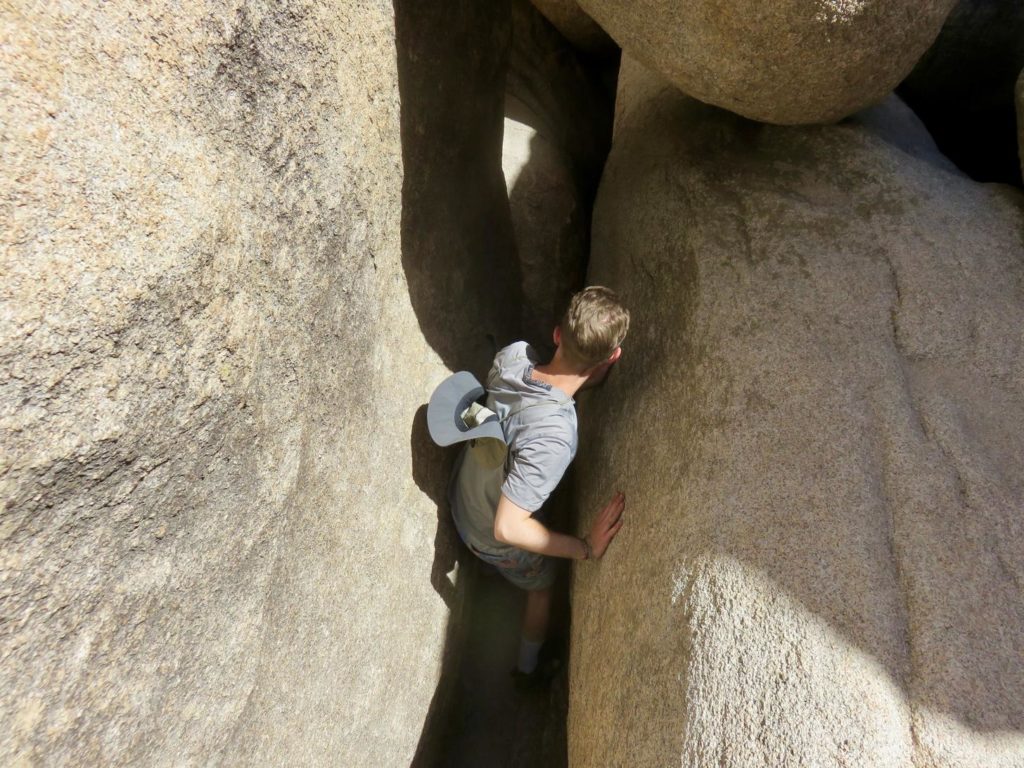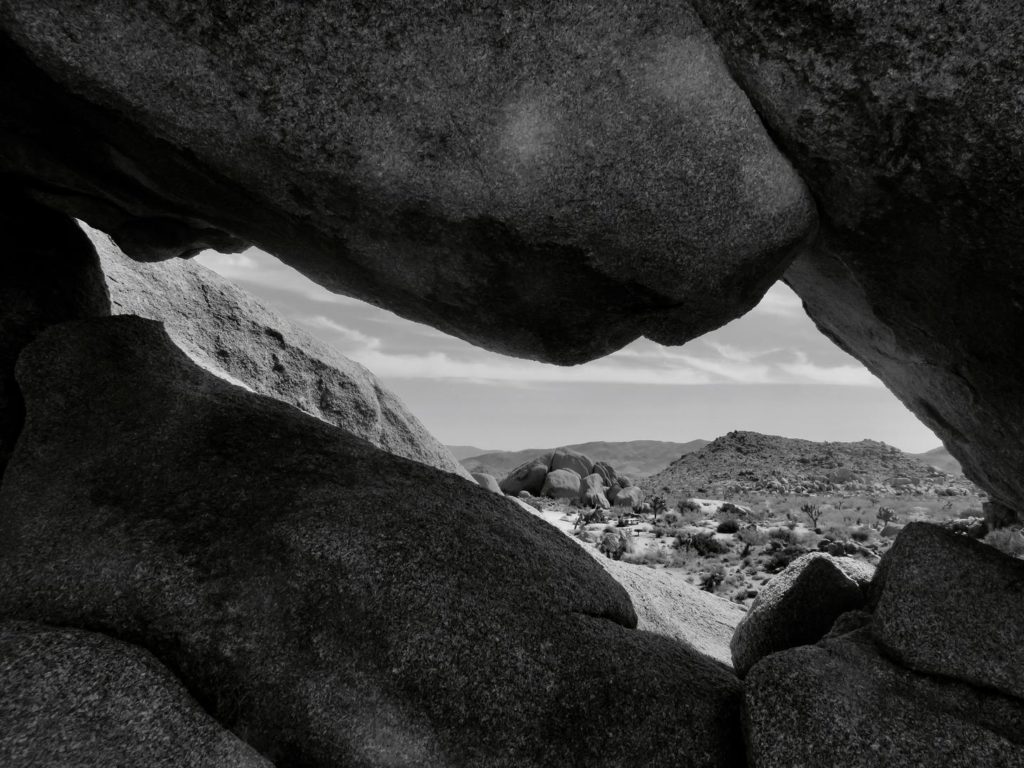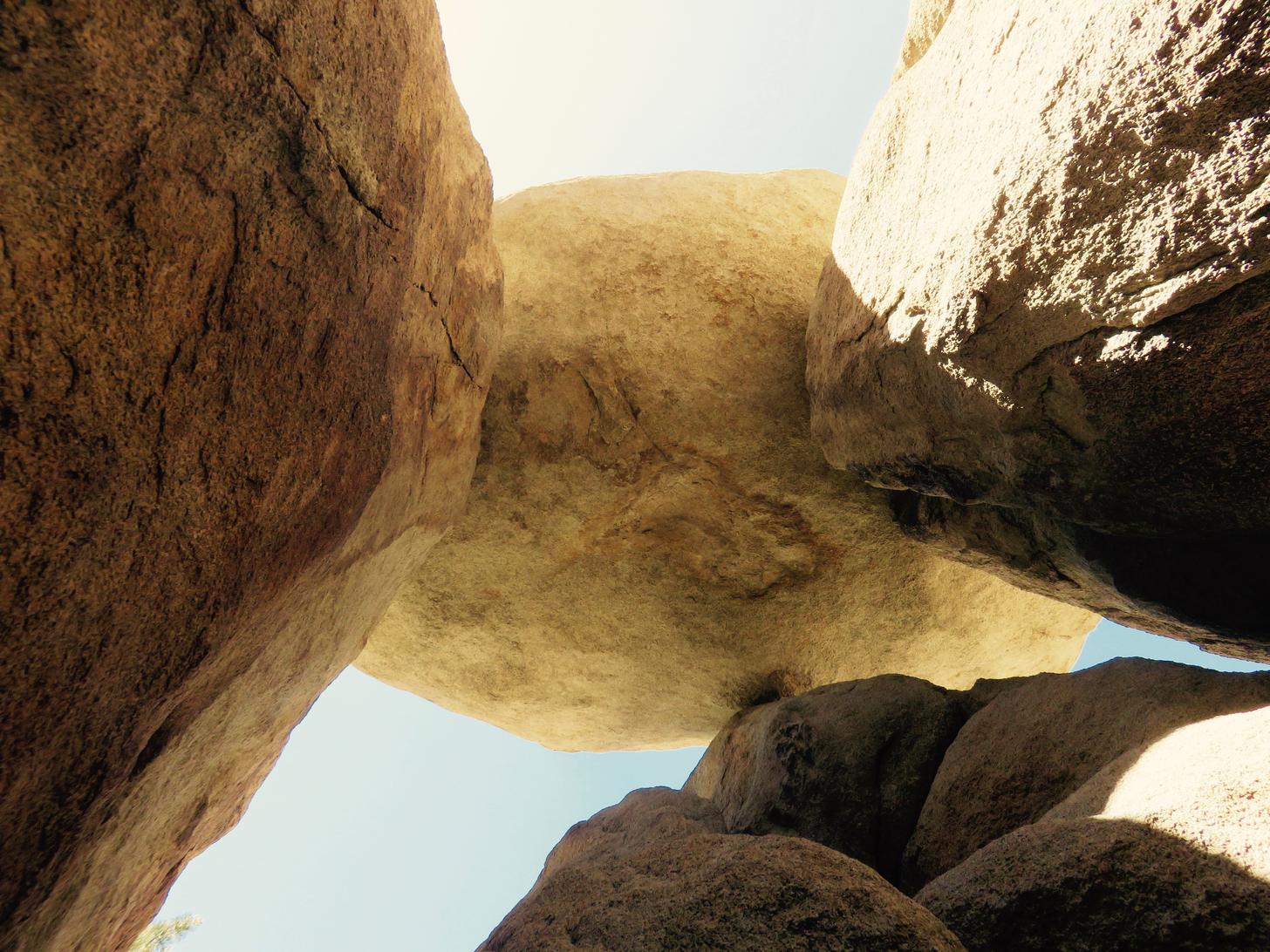
The Most Repulsive Tree
The legendary explorer John Fremont once described the Joshua tree as “the most repulsive tree in the vegetable kingdom.” Another writer was struck by the tree’s “rigid, angular, grotesquely pointing branches.” Fortunately, the National Park Service felt differently about the peculiar tree-like yuccas, instead naming a national park in their honor.
It’s true that Joshua trees are a strange sight. With their spindly branches and spiky leaves, they look like they jumped straight out of a Dr. Seuss book. But the plant takes on an otherworldly quality when paired with the stark beauty of the Mojave desert. Throw in giant mounds of precipitously stacked boulders, an assortment of cacti, armies of lizards and endless blue skies and it’s easy to see why Joshua Tree earns its national park status.
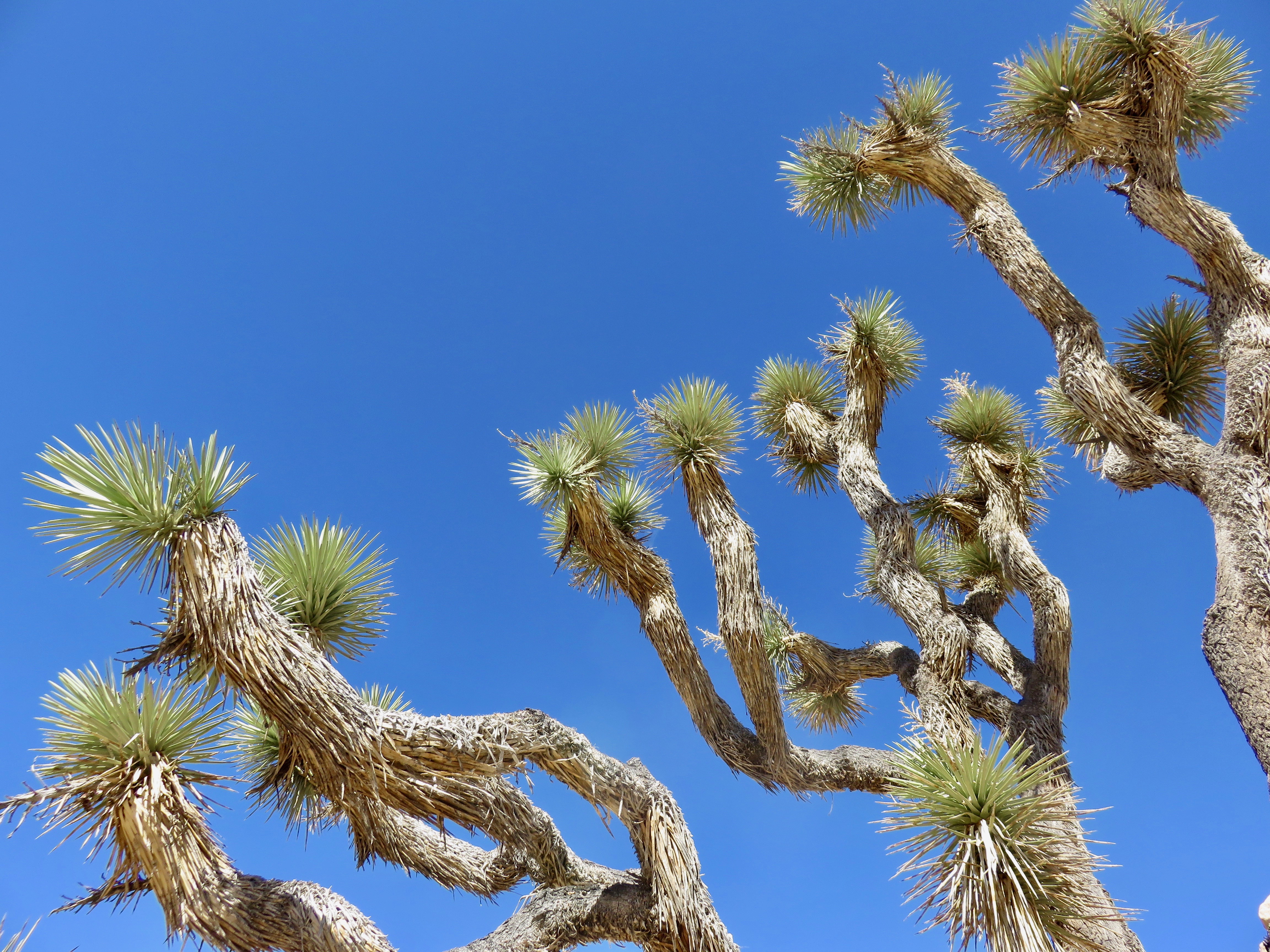
It was here that a college friend and I spent three days camping amid the park’s “repulsive” trees. The national park encompasses a unique ecosystem at the junction of the Mojave and Colorado deserts, but the majority of its namesake trees live in the higher Mojave section of the park. This region of the park also includes the most scenic bouldering opportunities. Unfortunately, easy access to Los Angeles, Palm Springs and San Diego means droves of tourists, particularly in peak seasons like fall and spring. With more than 2.5 million visitors in 2016, Joshua Tree is swiftly becoming one of the most popular national parks in America.
When my friend and I arrived on the Saturday morning of Memorial Day weekend, we were not optimistic about the prospects of camping in the park. After striking out at numerous campgrounds, we were amazed to find one empty spot at the Hidden Valley campground. With nearby access to the Hidden Valley trails, Barker Dam and seemingly endless boulders, this would be our basecamp for two days of scrambling adventures
A Giant Playground

Joshua Tree is world-renowned for its rock climbing. The abundant monzogranite rocks are surprisingly grippy and offer routes ranging from novice to insane. The park itself boasts more than 8,000 official climbing routes and 2,000 boulder problems. Even for the uninitiated climber, like myself, there’s still endless opportunity for scrambling and low-key bouldering.
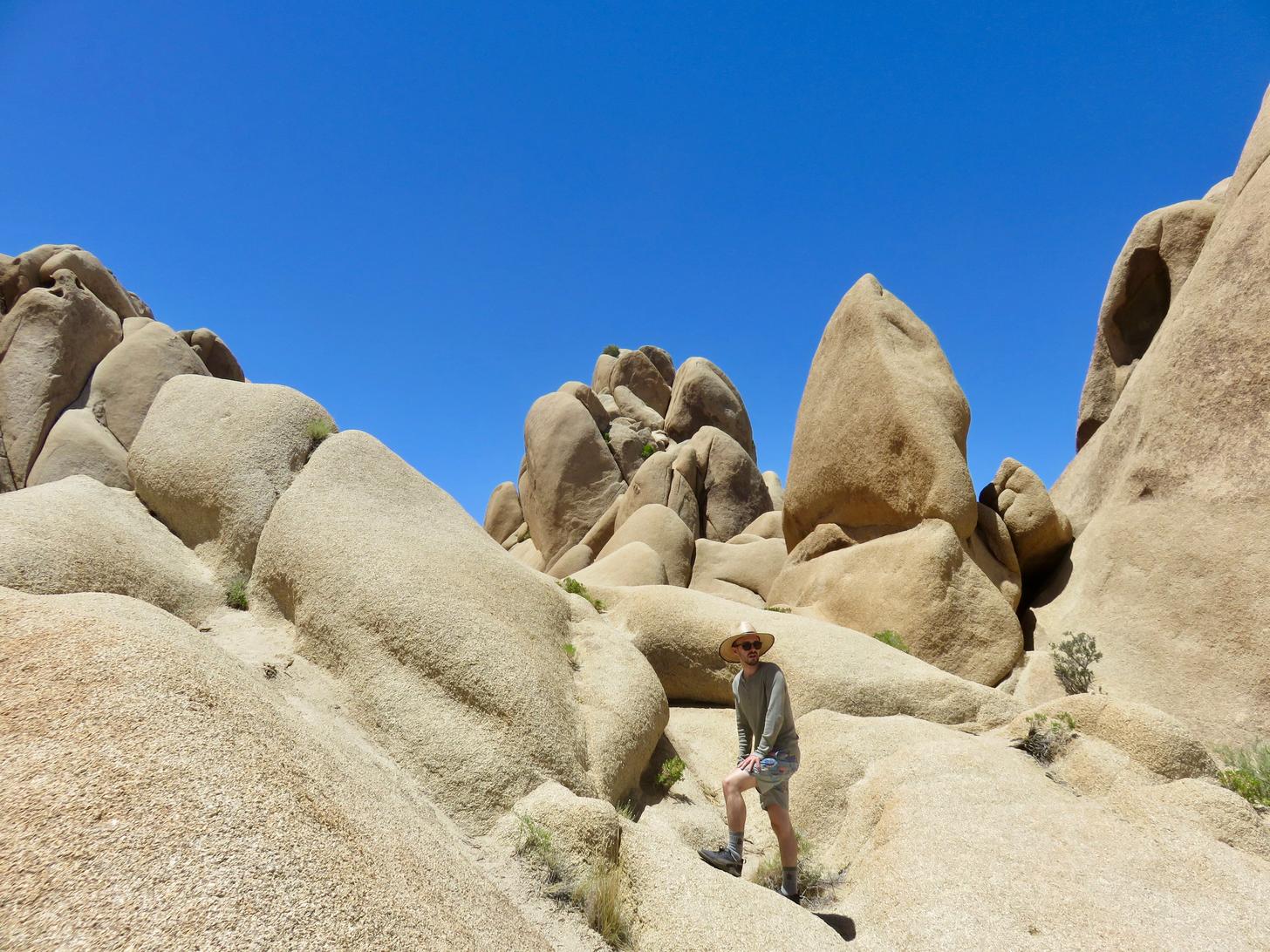
We spent hours getting lost in the rocks — crawling in and out of cracks and crevices, exploring caves, and trying to climb to the top of rocks for no other reason than the challenge. Joshua Tree is all about indulging your inner child. The rocks at the far end of the Hidden Valley trailhead were particularly striking. After a few simple moves and some belly crawling, we found ourselves in a labyrinthine network of slot canyons, granite fins and hidden caves. Almost immediately, the sounds of the parking lot were muffled, and we encountered no one in this claustrophobic maze. Navigating the rocks here required tight squeezes — we could only pass through some of the slots sideways — and some exposure when we climbed out of the cracks. But the thrill of exploring this rocky wonderland was reward enough. The park is truly a massive playground for people of any age.

It was late May when we visited the park and temperatures were already in the high 90s. With that kind of heat, we spent the afternoons lounging at camp or seeking AC at the visitor center. Fortunately, the desert cools off fast. By the evening, the temperature was perfect for exploring the park or seeking the perfect place to view the sunset.
On the first night, we scrambled up the rock cliffs enclosing our campground. For the second night, we opted for a more adventurous route, once again returning to the Hidden Valley trail. This time, however, we hiked up the main trail for roughly a mile, before heading up some of the boulder hills on the east side of the valley. After a brief scramble, we found ourselves at the top, with panorama views in every direction. As the rocks and trees faded to silhouettes, the desert sunset showed its many colors, finally ending in a deep orange glow. With some of the darkest skies in the country, the park takes on a second life at night.
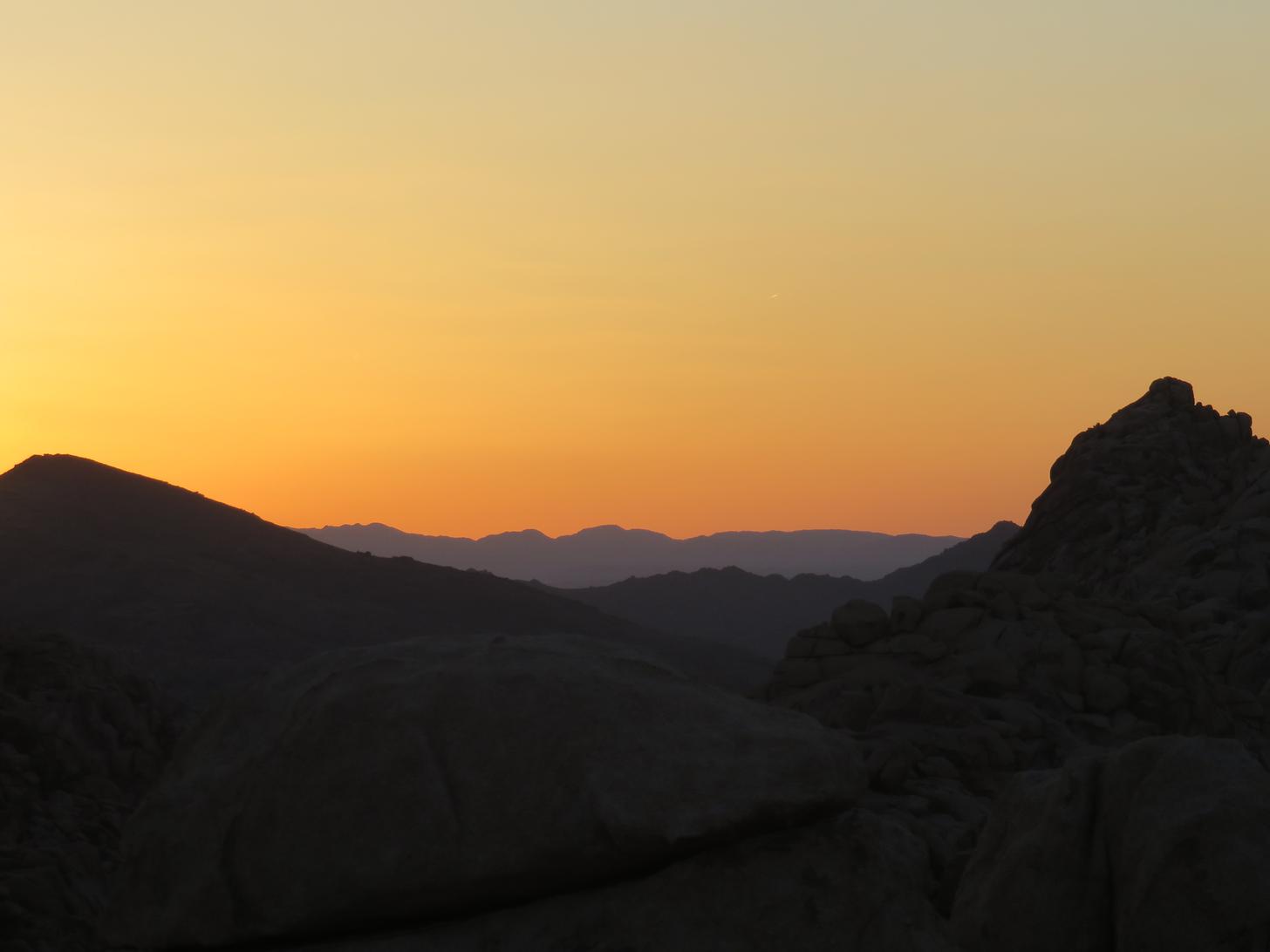
When it comes to the premiere national parks of the West, Joshua Tree has some major competition, with heavyweights like Yosemite, Grand Canyon and Zion often stealing the spotlight. Plus, as one of the newer parks in the state — Joshua Tree was a national monument until 1994 — it’s understandable that the park may have an inferiority complex. But as its growing popularity suggests, Joshua Tree is more than worthy of its own trip.
Don’t Miss:
Hidden Valley, Barker Dam, Skull Rock, Hall of Horrors
If You Have Time:
Cholla Cactus Garden, Keys View, Ryan Mountain, Lost Horse Mine
